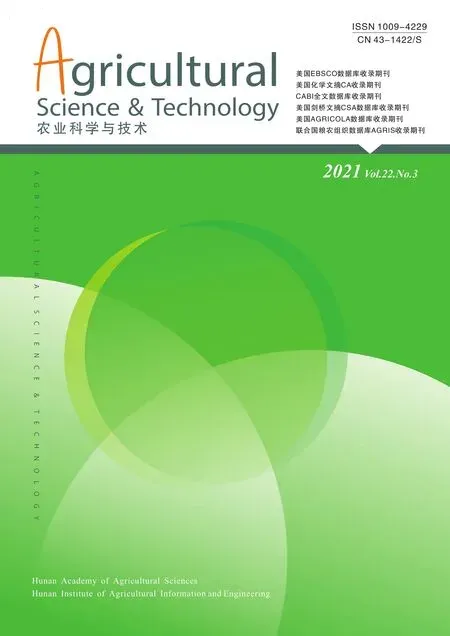Screening of an Antagonistic Strain of Phytophthora nicotianae and Its Application Potential
2022-01-12LUOZhiweiLINYuanshan
LUO Zhi-wei, LIN Yuan-shan
College of Bioscience and Biotechnology, Hunan Agricultural University, Changsha 410128, PRC
Abstract Soil samples were taken from healthy tobacco plant rhizosphere in Phytophthora nicotianae severely infected tobacco field in Hunan Province to screen out antagonistic strains against Phytophthora nicotianae by the plate confrontation method. Subsequently, we had obtained a strain LZW-118 which had an obvious inhibitory effect on Phytophthora nicotianae with the plate inhibition rate of 71.14%. The strain LZW-118 was identified as Burkholderia vietnamiensis based on morphological, physiological and biochemical characteristics analysis and 16S rDNA sequence. The growth-promoting potential test results showed that the strain not only had a significant inhibitory effect on Phytophthora nicotianae but also had the functions of nitrogen fixation, phosphorus dissolution and growth promotion for tobacco plant height, leaf length, leaf width and the number of leaves, showing a good application potential in biological control.
Key words Phytophthora nicotianae; Antagonistic bacterium; Burkholderia vietnamiensis; Biological control
1. Introduction
Tobacco black shank, also known as tobacco blight, the pathogen isPhytophthora nicotianae
. It is commonly known as rotten waist or black root disease. It mostly occurs in the adult-plant stage, while a few in the seedbed period, the incidence rate is 5% to 20%, even more than 50%. In China, the yearly economic costs caused by tobacco black shank are more than 100 million yuan which ranked second only for tobacco virus disease. The control methods ofPhytophthora nicotianae
mainly include agricultural control (crop rotation and breeding of resistant cultivars), chemical control(mancozeb, oxadixyl, cinnamamide fungicide flumorph and gold ridomil MZ WG) and biological control.Agricultural control and chemical control tend to result in pesticide residue and pesticide resistance. Moreover, single-crop cultivation may lead to the degeneration of pesticide-resistant crops, biological imbalances and other problems. Biological control method has the characteristics of safety, effectiveness, green and environmental protection, and hence it has a promisi ng prospect. Therefore, the screening test of antagonistic bacteria ofPhytophthora nicotianae
was carried out in order to screen the functional bacteria with antagonistic effect ofPhytophthora nicotianae
from the soil of tobacco planting areas in Hunan Province, so as to provide strain resources for the biological control of tobacco diseases. As a result, the writer screened the functional strain which was resistant to tobacco black shank in the breeding area of tobacco in Hunan Province and provide resources of bacteria that can biologically control tobacco disease.2. Materials and Methods
2.1. Experimental materials
2.1.1.Phytophthora nicotianae
Phytophthora nicotianae
was provided by Tobacco Bioscience and Engineering Center of Hunan Agricultural University.2.1.2. Culture media
(1) LB media: tryptone 10.0 g, yeast extract 5.0 g, sodium chloride 10.0 g, agar powder 20 g (only solid media) and distilled water 1 000 mL, pH value was 7.0~7.2. (2) PDA media: 200 g peeled potato was chopped and boiled for 30 min, adding water to a constant volume of 1 000 mL after filtration with 200 mesh sieve then 20 g glucose and 20 g agar power was added. (3) Oatmeal media: 30 g oatmeal was bioled for 1 h, adding water to a constant volume of 1 000 mL after filtration with gauze then 20 g agar was added. (4)10% V8 media: Mix 100 mL of American V8 vegetable juice with 1 g of calcium carbonate, take the supernatant after centrifugation at 3 000 r/min, add tap water to a constant volume of 1 000 mL, pH was the natural value. (5) Ashby nitrogen-free media: mix up mannitol 10 g, CaCO5 g, MgSO·7HO 0.2 g, KHPO0.2 g,CaSO·2HO 0.1 g, NaCl 0.2 g and agar powder 20 g,and add tap water to a constant volume of 1 000 mL.(6) Phosphate-solubilizing medium: mix up (NH)SO0.5 g, glucose 2 g, MgSO·7HO 0.5 g, NaCl 0.2 g,CaCO2.5 g, Ca(PO)10 g, MnSO0.02 g, FeSO0.02 g and agar powder 20 g, and add tap water to a constant volume of 1 000 mL, pH 7.2. All the above media were sterilized at 121℃ and 0.1 MPa for 20 min.
2.2. Experiment methods
2.2.1. Isolation of soil bacteria
About 400 g of soil at 5~10 cm from the roots of healthy plants in tobacco fields with serious incidence ofPhytophthora nicotianae
from Beisheng,Chunkou, Dongyang and other places in Liuyang City, Hunan Province, were collected and brought back with sub packaging marks. 10 g soil was put into a triangular flask with little glass balls and sterile water inside, and then oscillated at 160 r/min for 30 min. The concentration of the liquid then was diluted to one tenth with water. 100 μL of 10, 10, 10,10and 10diluted water was respectively put onto the LB solid medium plate and spread evenly. The culture medium was moved to a 30℃ constant temperature incubator and cultivated for 3 d.2.2.2. Screening of antagonistic bacterium
The activatedPhytophthora nicotianae
was inoculated into a PDA medium and cultivated for 5 d. The mycelium cakes were collected by 6 mm puncher and transferred to the center of PDA medium plate. The purified bacteria were point-inoculated or streakinoculated in the symmetric position ofPhytophthora nicotianaes
cakes, cultivated for about 5 d at 28℃. When thePhytophthora nicotianae
hyphae covered the medium, the diameters of the bacteria colonies were measured. The inhibition rate was calculated according to formula (1).
2.2.3. Identification of antagonistic strain LZW-118
LZW-118 strains were streak-inoculated on LB solid media and cultivated at 37 ℃ for 48 h. The morphology and appearance of colonies were observed and colonies were taken for Gram staining. The physiological and biochemical determination was carried out according toManual on the Identification of Common Bacterial Systems
. The sequencing of the 16S rDNA was conducted by BGI Genomics Co., Ltd. and the sequencing results were compared with blast sequence homology by NCBI GenBank. The phylogenetic tree was constructed by MAGE 7.0 software.2.2.4. Preliminary studies on promoting growth potential
(1) Identification of potassium dissolving ability.The strains were inoculated on potassium resolving media, cultivated in an incubator at 30 ℃ for 7 d and then observed to make certain whether there were potassium resolving circles. (2) Identification of phosphate resolving ability. The strains were inoculated on phosphate resolving culture media, cultivated in an incubator at 30 ℃ for 7 d and observed to make certain whether there were phosphorus-dissolving halos. (3)Identification of nitrogen fixing ability. The strains were inoculated on Ashby nitrogen-free media,cultivated in an incubator at 30℃. (4) Pot experiment.K326 was used as the tested variety. Preparation of fermentation broth: LZW-118 strains were inoculated on LB media and cultivated for 96 h at 30℃ and 160 r/min to be used. The concentration of the fermentation broth was adjusted to 2×10CFU/mL. Cultivation of test tobacco: the tobacco seedlings were cultivated by floating seedling method and the seedlings were transplanted into the pot after 30 d. The cultivation medium was made of peat and perlite according to the weight ratio of 7 ∶3. The pot experiment: there were 3 treatments, clean water control treatment (CK), LB media treatment (T1) and LZW-118 fermentation broth treatment (T2), respectively. The first root irrigation treatment was carried out 3 d after the tobacco was planted in the pot, 20 mL per plant (5 mL fermentation broth or LB medium+15 mL pure water), the second root irrigation treatment was carried out after 7 d.Water and fertilizer management according to GB/T 232221-2008 rules for cultivation of flue-cured tobacco. The agronomic characters of tobacco were measured at the resettle stage, and the determination method was conducted according to YC/T 142-2010.
2.2.5. Effects of fermentation broth of antagonistic strain on thePhytophthora nicotianae
One circle of well-cultivated LZW-118 strains was inoculated into the LB liquid media at 28 ℃, 150 r/min,for 96 h and then the liquid supernatant was collected after centrifugation at 10 000 r/min for 10 min, and the liquid supernatant was filtered by the 0.25 μm pinhole membrane to be used. The effect of antagonistic strain fermentation broth onPhytophthora nicotianae
was determined by tube dish method. The Oxford cup was put into the culture plate and the oatmeal medium was poured into the culture plate, and then cooled to 55℃, about 20 mL per plate was used; the Oxford cup was taken out after medium cooled and solidified, and 10 μL oatmeal medium was taken with a pipette tips then injected into Oxford cup hole for back sealing; 0.1 mLPhytophthora nicotinae
fermentation broth was sucked and cultivated on V8 liquid media for 7 d, and then was transferred into the culture media and spread evenly; 50 μL well filtered supernatant of LZW-118 was poured into it, compared with the group with sterile water, and it was put into an incubator at 28℃for 5 d. The inhibition rate can be calculated as the formula (2).
3. Results and Analysis
3.1. Inhibitory effects of different strains on Phytophtora nicotianae
The results showed that 43 bacteria which were resistant toPhytophthora nicotianae
were picked from the tobacco rhizosphere soil. The inhibition rate of some bacterial againstPhytophtora nicotianae
ranged from 62.16%~71.14% (Table 1). The antagonistic ability of LZW-118 strain was the strongest (Fig. 1),and the inhibition rate was 71.14%.3.2. Identification of LZW-118 strains
3.2.1. Morphological and biological characteristics ofLZW-118 strains
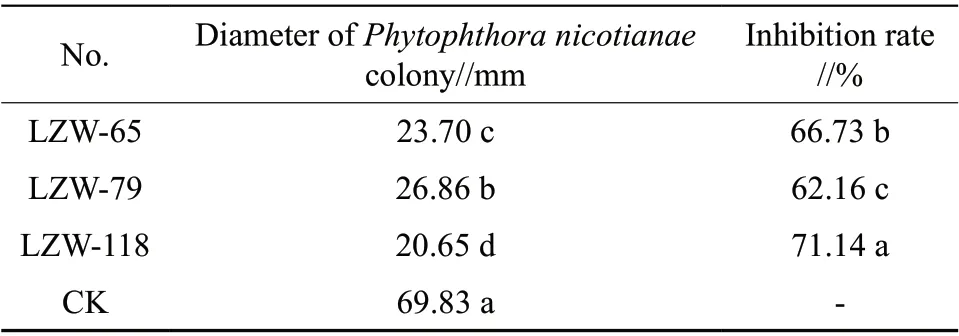
Table 1 Inhibition rate of some bacteria against Phytophtora nicotianae
On the LB solid culture media, the colonies of LZW-118 were a light milk yellow white and bulged circles with regular edge and smooth and moist surfaces (Fig. 2C). The result of Gram staining was negative and the shape of the bacteria was like a straight-bar. According to its physiological,biochemical and morphological features (Table 2),LZW-118 was identified as a member ofBurkholderia
.3.2.2. The phylogenetic tree and the analysis on the 16S rDNA sequencesThe obtained gene sequences were compared with the known sequences in NCBI database, and the phylogenetic tree was constructed by MEGA 7.0, as shown in Fig. 3, the sequence homologous rate ofBurkhol
deria vietamiensis strain LMG 10929 and LZW-118 was 99.79% and their physiological and biochemical characteristics were basically identical. Based on the studies in the biological features and 16S rDNA sequences, LZW-118 had preliminarily been proved to beBurkholderia vietnamiensis
.3.3. Preliminary research on the growth-promoting potential
The growth promoting potential of strain LZW-118 was preliminarily explored and the results showed that the antagonistic strain LZW-118 formed a phosphorus-dissolving halos in the inorganic phosphorus dissolving plate (Fig. 2D), which had the function of inorganic phosphorus dissolving; it was able to grow on K-feldspar culture media, but it was unable to form a potassium-dissolving halos; it was able to grow on Ashby nitrogen-free culture media(Fig. 2E) and maybe have nitrogen fixation effect.As shown in Table 3, application of antagonistic strain LZW-118 fermentation broth had excellent performance on the promotion of the agronomic characters of tobacco. Compared with CK, the plant height, leaf length, leaf width, girth and leaf number of T2 all had been significantly improved,increased by 19.91%, 15.49%, 5.23%, 3.09% and 8.33% respectively. Compared with CK, T1 had no differences but a slight advantage in the development of agronomic characters. This showed that antagonistic strain LZW-118 had great growth promoting potential.
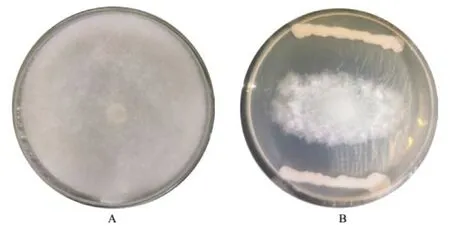
Fig. 1 Inhibition effect of antagonistic strain against Phytophtora nicotianae
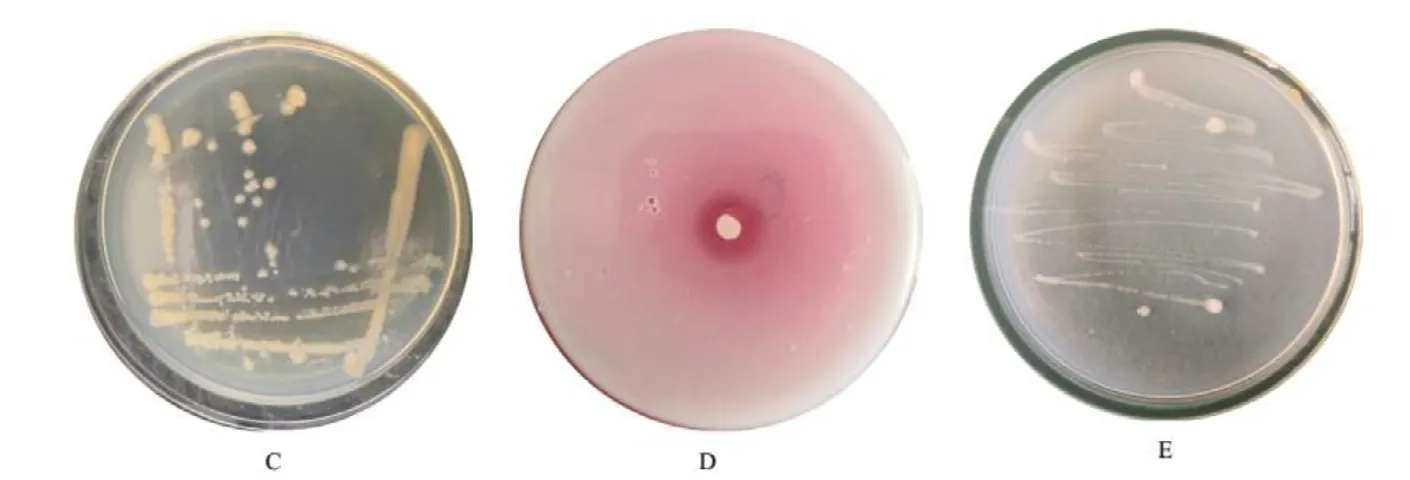
Fig. 2 The morphology and phosphate-solubilizing effect of the bacterial colonies of LZW-118 on different culture media

Table 2 physiological and biochemical characteristics of LZW-118

Fig. 3 The phylogenetic tree of LZW-118 strains based on 16S rDNA
3.4. Effects of antagonistic strain fermentation broth on Phytophthora nicotianaes
As shown in Fig. 4, the supernatant of LZW-118 strains fermentation broth had an impressive inhibiting impact on the development ofPhytophthora nicotiannaes
and the inhibition rate was 80.07%,which showed that certain substances in the fermentation broth could inhibit the growth ofPhytophthora nicotianaes
.4. Conclusion and Discussion
The results showed that LZW-118 strains screened from tobacco rhizosphere soil wereBurkholderia vietnamiensis
strain which was capable of not only dramatically inhibiting the growth and development ofPhytophthora nicotianaes
, but also dissolving phosphorous, fixing nitrogen and significantly improving the height, length and leaf number, and had good application prospects. Some studies have shown thatBurkholderia vietnamiensis
had strong inhibitory ability effect on some soil-borne bacterium and had a good function of promoting plant growth. TheBurkholderia vietnamiensis
strainPH2 screened by HU Xhad a good phosphorus dissolving effect and a good inhibitory effect on pathogenic of rice blast and sheath blight. LI Pet al
.found that the inhibition rate ofBurkholderia vietnamiensis
strain BTF5 to watermelon wilt disease was 63.09% and the inhibition effect was still stable after 8 generations of subculture. QIAO Z Wet al
.separated several strains of phosphorous solubilizing bateria from the yellow soil. Among them, the phosphorus dissolving capacity ofBurkholderia
strain W4 was 564.07 mg/L, which was significantly higher than other strains and had good phosphorus dissolving characteristics. In the study on the effect of diseases prevention and yield increase in greenhouse, CHEN Ket al
.found that the control effect ofBurkholderia vietnamiensis
recombinant strain B418-37 on cucumber bacterial wilt was 87.0% and the biomass of cucumber seedlings treated with the strain increased by 19.7%compared with the control; the control effect on wheat sharp eyespot was 94.5%, and the biomass increased by 28.6%; that showedBurkholderia
strain had good biocontrol effect. The nitrogenase activity ofBurkholderia
strains screened by MAO X Jet al
.reached 32.286±2.076 nmol/(h·mg) and ACC deaminase activity reached 5.393±0.362 μmol/(h·mg).Compared with nitrogen-free treatment, the fresh weight of Chinese cabbage treated byBurkholderia vietnamiensis
increased by 46.59%, showing good growth promoting potential. At present, the control effect ofBurkholderia vietnamiensis
onPhytophthora nicotianae
has not been reported. The antagonistic strains ofPhytophthora nicotianae
obtained in this study could provide high-quality biocontrol resources for the biological control ofPhytophthora nicotianae
disease in the future.
Table 3 Effects of different treatments on agronomic characters of tobacco
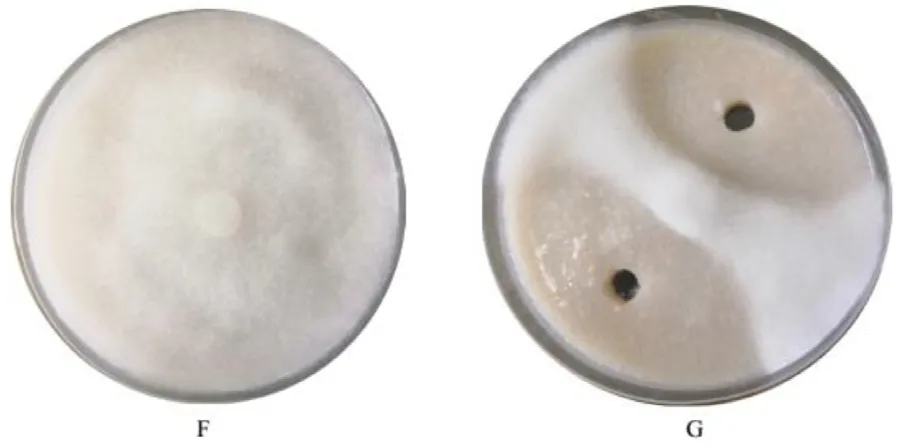
Fig. 4 Antagonistic effect of LZW-118 strain fermentation broth on Phytophthora nicotianaes
杂志排行
Agricultural Science & Technology的其它文章
- Characterization of Specific Spoilage Bacteria and Volatile Flavor Compounds of Flavored Crayfish
- Protective Effect of Immaturue Bitter Orange (Citrus aurantium L.) Flavonoids Extracts on PC12 Cell Injury Induced by 6-Hydroxydopamine
- Effects of Boron Application on Growth and Quality of Flue-cured Tobacco NC297 under Different Potassium Supply Levels
- Efficient Extraction of Tea Saponin from Tea Seed Meals by 60Co γ-Irradiation
- Community Characteristics of Cardamine in Brassicaceae
- Effects of 4 Types of Remediation Agents on Reducing Cd Contents in Soil and Rice on Cd-contaminated Farmland
